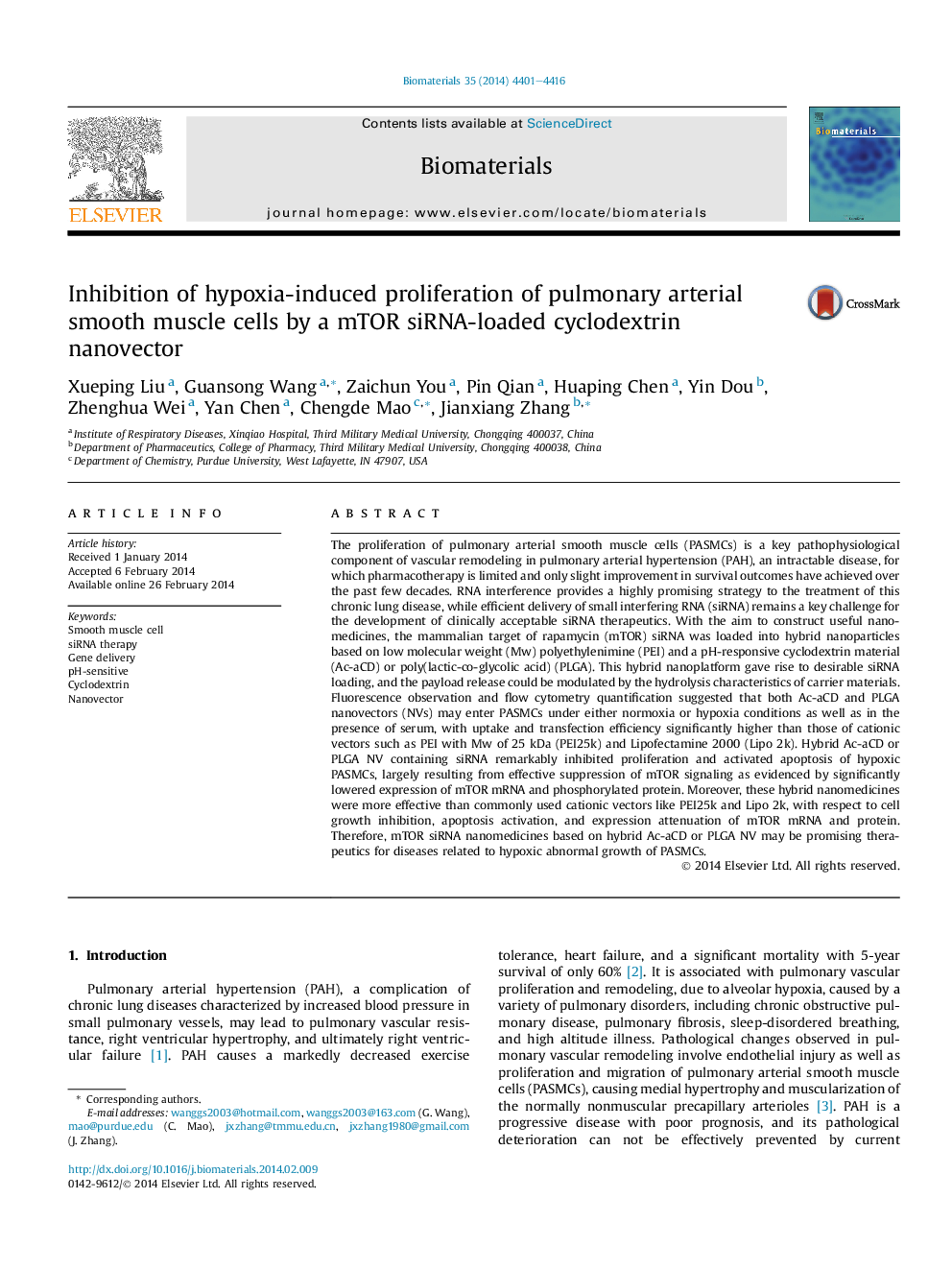| کد مقاله | کد نشریه | سال انتشار | مقاله انگلیسی | نسخه تمام متن |
|---|---|---|---|---|
| 5936 | 448 | 2014 | 16 صفحه PDF | دانلود رایگان |

The proliferation of pulmonary arterial smooth muscle cells (PASMCs) is a key pathophysiological component of vascular remodeling in pulmonary arterial hypertension (PAH), an intractable disease, for which pharmacotherapy is limited and only slight improvement in survival outcomes have achieved over the past few decades. RNA interference provides a highly promising strategy to the treatment of this chronic lung disease, while efficient delivery of small interfering RNA (siRNA) remains a key challenge for the development of clinically acceptable siRNA therapeutics. With the aim to construct useful nanomedicines, the mammalian target of rapamycin (mTOR) siRNA was loaded into hybrid nanoparticles based on low molecular weight (Mw) polyethylenimine (PEI) and a pH-responsive cyclodextrin material (Ac-aCD) or poly(lactic-co-glycolic acid) (PLGA). This hybrid nanoplatform gave rise to desirable siRNA loading, and the payload release could be modulated by the hydrolysis characteristics of carrier materials. Fluorescence observation and flow cytometry quantification suggested that both Ac-aCD and PLGA nanovectors (NVs) may enter PASMCs under either normoxia or hypoxia conditions as well as in the presence of serum, with uptake and transfection efficiency significantly higher than those of cationic vectors such as PEI with Mw of 25 kDa (PEI25k) and Lipofectamine 2000 (Lipo 2k). Hybrid Ac-aCD or PLGA NV containing siRNA remarkably inhibited proliferation and activated apoptosis of hypoxic PASMCs, largely resulting from effective suppression of mTOR signaling as evidenced by significantly lowered expression of mTOR mRNA and phosphorylated protein. Moreover, these hybrid nanomedicines were more effective than commonly used cationic vectors like PEI25k and Lipo 2k, with respect to cell growth inhibition, apoptosis activation, and expression attenuation of mTOR mRNA and protein. Therefore, mTOR siRNA nanomedicines based on hybrid Ac-aCD or PLGA NV may be promising therapeutics for diseases related to hypoxic abnormal growth of PASMCs.
Journal: Biomaterials - Volume 35, Issue 14, May 2014, Pages 4401–4416